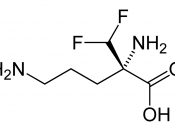There are many diseases and conditions, such as Tourett Syndrome, Myoclonus, Muscular Dystrophy, and Huntington's disease, that affect such a small number of people within the US borders that the diseases and conditions is classified as "rare". Since there is such a small market (people), that are effected by any one rare disease or condition, a drug company which develops an orphan drug may reasonably expect the drug to generate relatively small sales/profits, in comparison to the cost associated with developing the drug and consequently incur a financial loss. Thus, our capitalistic approach of supply (available goods) and demand (the number of consumers that desire such good) spearhead our economic base. (Ferrell, Fraedrich, Ferrell, 2005).
In other words, there is no large profit or a chance to increase stock prices for the manufacturing of "Orphan Drugs", which is used in the treatment of rare disease. In my opinion, the ethical issues that business wrestle with are profits margins.
Despite medical advances, there are still many diseases for which there are no cures. The cost of bringing drugs to market can exceed the 300, 000 mark. The high cost of developing a new product and introducing it into a small market for the treatment of some rare diseases is unprofitable and little attention is received. To entice pharmaceutical companies to change there ethical behavior and place social responsibility ahead of profits. Congress passed in the 1983 Orphan Drug Act; with the purpose of which was to stimulating the development of drugs with limited market potential, because either the condition was so uncommon or the drug's development and manufacturing costs were too high, (Williams, Torrens, 2000). Most people though would be shocked to know that an orphan drug is one that is used to treat more than just rare...


